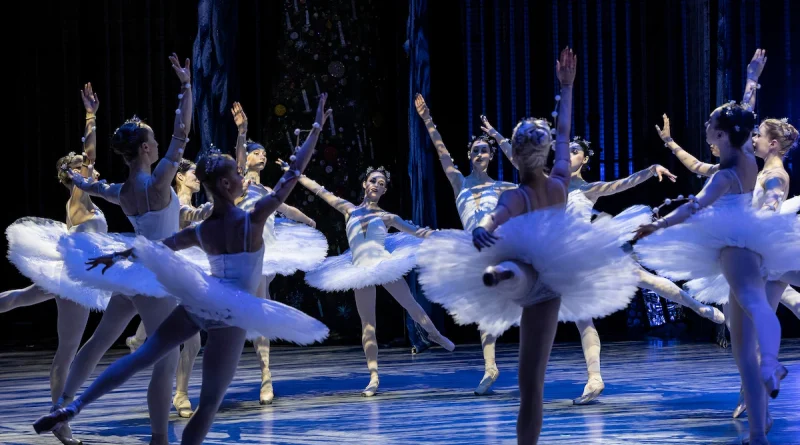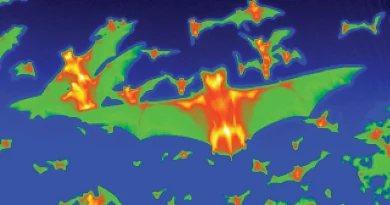With The Kiev City Ballet In Their Unexpected Exile
Published March 17, 2022
12 min read
Paris, FranceThe art of ballet comes from concentration, discipline, and consistency: the same movements, repeated at the bar and across the floor; a language of pliés, relevés, jetés that has remained stable for hundreds of years.
But the rehearsal of the Kiev City Ballet on March 16 was unusual in almost every way. The dancers practiced in a small room crowded with reporters taking photos and videos. There was too little space at the bar for all the dancers, so some used chairs or the side of a piano as they did their exercises. As they leaped across the floor in small groups, one dancer’s stride was too wide for the room, and he bounced out the door. Another fell awkwardly on his feet; he seemed to have hurt his ankle.
Ekaterina Kozlova, who runs the company with her husband Ivan Kozlov, alternated between supervising her charges and watching the journalists, some of whom had been upsetting the dancers with their questions.
“We try to be especially gentle with the dancers right now because everyone is so stressed, everyone is under so much pressure,” Kozlova says. “It’s calls from home, the constant news stream. Because of technology, we are in so much more contact. Our dancers know minute-by-minute what’s going on. They are always on their phones trying to keep themselves updated. And I think a lot of people are exhausted.”
The troupe, which is based in Ukraine’s capital city, Kyiv, left for France on February 23 for a planned two-week tour performing a child’s version of The Nutcracker. On February 24, Russian President Vladimir Putin launched the invasion of their country. The conflict has now killed thousands and displaced nearly three million people. The ballet dancers are currently living in Paris at the city’s Théâtre du Châtelet for a period whose end seems further and further away.
“We were totally unprepared for this,” says Kozlova. The company brought only enough costumes for the shows it was originally scheduled to perform. Beyond that, says Kozlova, “We didn’t bring anything. We don’t have music, videos, documents—everything we have is left in Kyiv… We basically just psychologically said goodbye to everything that we have.”
Attack against cultural heritage
Russian aggression in Ukraine has been particularly destructive for the country’s cultural heritage.
“Culture is a dedicated target in the Russian war strategy,” says Sebastian Majstorovic, who with two colleagues runs Saving Ukrainian Cultural Heritage Online (SUCHO), a group of some 1,200 cultural heritage professionals who are seeking to safeguard digital archives and data from Ukrainian institutions. “If you erase everything that supposedly makes [Ukraine] unique,” he says, “then you really fulfill the mission that Putin has laid out.”
Since 2014, when Russia occupied and annexed Crimea, “Russian officials have removed artifacts, demolished grave sites, and shuttered churches in the Donbas and Crimea,” the U.S. State Department said in a statement. The current war has already destroyed or damaged a number of monuments, including the Ivankiv Historical and Local History Museum, and damaged the historic Svyatohirsk monastery. “This is irreplaceable cultural heritage and represents a profound loss to us all.”
Most of the 38 Kiev City Ballet dancers in Paris are between 18 and 22 years old. Trained in large part at the same school, many have known each other most of their lives. As they rehearse, they shift between speaking Ukrainian and Russian. They also often speak English, or use French for specific ballet vocabulary. They represent only part of the troupe of about 70. Several other dancers are currently in the Czech Republic.
Ksenia Lytvynenko, 19, had arrived in Paris only two days ago. Her mother and brother are still in Poland. She doesn’t usually tour with the ballet company, but she asked if she could join the group, which includes four of her former classmates from Kyiv. Through ballet, she says, “I can express myself, and I can express to people what’s going on right now in my country.”
The dancers are trying to continue to work and perform as best they can. One says that the conflict is always on his mind. Another had not heard from her parents in Mariupol for two weeks. “It’s very difficult logistically for us to cope with all of this,” says Kozlova. But, she notes, “we’re so fortunate to have so much support.”
Parisian officials hope to provide not only housing but also a place for the dancers to work. They’ll soon start taking classes at the Paris Opera, and they often attend performances in the evening. The company has received donations of tights and leotards, and starting next week the dancers will resume touring around France.
The Kiev City Ballet is not the only group of Ukrainian artists displaced in Paris. The Monfort Theatre in Paris’s southern 15th arrondissement, or district, is expecting about 15 performers, some with their families. Other theaters are preparing to welcome Ukrainian artists, according to Carine Rolland, who as deputy mayor in charge of culture has been coordinating with theatres across the city. She doesn’t yet know how many people are expected to arrive, but she’s committed to finding spaces for them to live and work.
“Culture must be supported in these moments of great hardship, and artists from oppressed countries as well, in particular Ukraine, because they are the voice of resistance,” she says. “Those who can speak must do so wherever they are.”
The captions on this story for three dancers who were misidentified have been updated.





